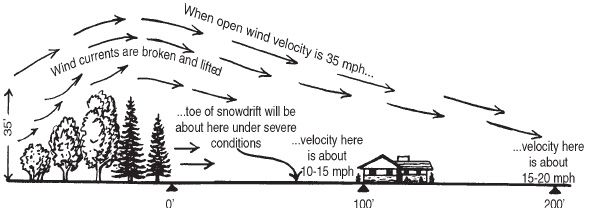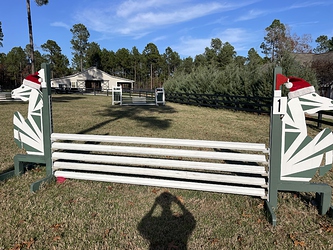You will want local information from your Extension service, so trees, shrubs planted are better suited to grow in your area. Things that lose leaves in winter offer very little protection. As mentioned, planting layers, helps more than a single row. You may need several rows to eventually get the sheltering effect you want.
Willows are quick growing but weak wood in strong winds. With height and full branching, they break in high winds. I am trying to get husband to top-off our willows, preventing future breakage (ice)across the fences. No wind protection in winter with naked branches. Safe for horses chewing it.
Whatever you plant will still NEED fencing to contain the animals. You can widen the planting strip for layer planting and to prevent it growing thru new fence as you replace the electric. I don’t know any animal-proof plants to serve as fence. You don’t want big thorny things that will rip the animals open traveling thru. Horses DO NOT learn from the experience! You can hate electric but it needs to be replaced with something else to keep horses home. Our baby horses learned that fences bite. They never bothered hot fences again! One of those tough life lessons a horse HAS to get understood.
There are miles of hedges on the Great Plains of the Dakotas. Wind breaks. Not sure what shrubs are used, if they shed leaves in winter. They may have special lighting (high lumens) needs to grow well. The hedges seemed very green and healthy when we drove thru the Dakotas years ago. We were headed north into Canada to pick up horses over 4th of July. No fences along the highway, just crops, hay, by the hedges. Worth asking about the shrubs used.



